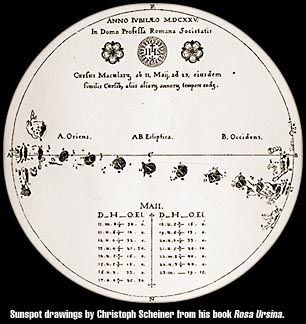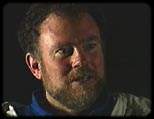|
|
|||||
|
|
|||||
.

|
But these scientists could not agree on what they were seeing. Some, like Galileo, believed that sunspots were part of the sun itself, features like spots or clouds. But other scientists, especially Scheiner, who was a Jesuit priest, believed the Catholic Church's doctrine that the heavens were perfect, representing the divine perfection of God. This doctrine is often seen as an extension of Aristotle's view of the heavens as ideal and unchanging. To admit that the sun had spots or blemishes that moved and changed would be to undermine that perfection! So Scheiner argued that the spots he and Galileo were seeing must be planets or moons orbiting the sun, and he interpreted his observations in the light of that argument. |
| Perhaps less entangled in the doctrine of the period, Galileo made a breakthrough. By observing the sun closely over a period of several weeks, Galileo noticed the shape of the sunspots became foreshortened as they approached the edge of the visible sun. He realized that this would only happen if the spots were objects on the surface of the sun, and not if they were spherical planets or moons passing before the sun. So he concluded that the spots must be on the surface. Though he admitted that he was unsure what the spots were, he suggested that they could be clouds. |
|
|
|||||
|
|
|||||
|
|

